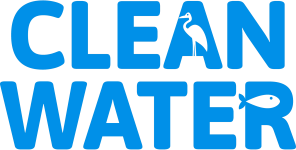India’s water bodies are vital for maintaining ecological balance and supporting biodiversity. Unfortunately, many of these lakes and rivers are plagued by pollution, eutrophication, and harmful algal blooms. At Clean Water, an Indore-based startup specializing in waterbody rejuvenation, we employ innovative solutions to address these pressing issues. One of our primary techniques involves using bacterial cultures to restore and rejuvenate lakes. In this blog, we delve into how bacterial cultures are harnessed for effective lake restoration and the benefits they bring to our ecosystems.
Introduction
Lakes are essential for both human and environmental health, providing water for drinking, irrigation, and habitat for numerous species. However, the rapid urbanization and industrial activities in India have led to severe contamination of these water bodies. Eutrophication, caused by excessive nutrients like nitrogen and phosphorus, has become a significant problem, leading to algal blooms and depleted oxygen levels. At Clean Water (https://clean-water.co.in), we employ nature-based solutions, including bacterial cultures, to tackle these challenges head-on.
Understanding Bacterial Cultures
Bacterial cultures are communities of microorganisms grown under controlled conditions. These cultures can be tailored to target specific pollutants and enhance the natural purification processes of water bodies. In the context of lake restoration, bacterial cultures are used to break down organic matter, reduce nutrient loads, and improve water quality.
Types of Bacterial Cultures
Aerobic Bacterial Cultures: These bacteria require oxygen to survive and are highly effective in breaking down organic pollutants in the presence of oxygen. They play a crucial role in reducing the biochemical oxygen demand (BOD) and chemical oxygen demand (COD) in lakes.
Anaerobic Bacterial Cultures: These bacteria thrive in oxygen-depleted environments and are essential for the degradation of organic matter in the sediment layers of lakes. They help in reducing the accumulation of sludge and silt.
Facultative Bacterial Cultures: These bacteria can switch between aerobic and anaerobic modes depending on the availability of oxygen. This adaptability makes them highly versatile for various restoration scenarios.
Application of Bacterial Cultures in Lake Restoration
At Clean Water, we implement a strategic approach to utilize bacterial cultures for lake restoration:
Assessment and Analysis: Our team begins by conducting a thorough assessment of the lake’s current condition. This involves analyzing water samples to determine the levels of pollutants, nutrients, and existing microbial populations.
Selection of Bacterial Cultures: Based on the assessment, we select specific bacterial cultures that are best suited to address the identified issues. For example, if the lake has high levels of organic pollutants, we may choose aerobic bacterial cultures to enhance the degradation process.
Inoculation: The selected bacterial cultures are then introduced into the lake. This can be done through various methods, including direct inoculation or using floating treatment wetlands that serve as habitats for these bacteria. The floating treatment wetlands are particularly effective as they provide a conducive environment for bacteria to thrive and multiply.
Monitoring and Maintenance: Regular monitoring is essential to ensure the effectiveness of the bacterial cultures. Our team conducts periodic water quality tests and adjusts the bacterial population as needed to maintain optimal conditions for lake restoration.
Benefits of Using Bacterial Cultures
Natural and Sustainable Solution: Bacterial cultures offer a natural way to restore water bodies without the use of harmful chemicals. This approach is sustainable and promotes the health of the entire ecosystem.
Reduction of Nutrient Loads: Bacterial cultures are highly effective in reducing nutrient loads, particularly nitrogen and phosphorus. This helps in controlling eutrophication and preventing algal blooms.
Improvement in Water Quality: By breaking down organic matter and reducing pollutants, bacterial cultures significantly improve water quality. This benefits both aquatic life and human communities that rely on these water bodies.
Enhancement of Biodiversity: The use of bacterial cultures fosters a balanced ecosystem by supporting the growth of beneficial microorganisms. This, in turn, enhances biodiversity and creates a healthier habitat for various species.
Cost-Effective Solution: Compared to traditional chemical treatments, bacterial cultures are a cost-effective solution for lake restoration. They require minimal maintenance and have long-term benefits.
Case Study: Nalanda Sarovar Restoration
One of our notable projects at Clean Water involved the restoration of Nalanda Sarovar in Indore. This lake had suffered from severe pollution and eutrophication. After a detailed assessment, we introduced a combination of aerobic and facultative bacterial cultures to target the high levels of organic pollutants and nutrient loads.
Over a period of six months, significant improvements were observed. The water quality parameters showed a marked reduction in BOD and COD levels. The clarity of the water improved, and the algal blooms were controlled effectively. This successful restoration project earned our founder, Priyanshu Kumath, the prestigious Water Hero award by the Jal Shakti Mantralaya, Government of India.
Challenges and Future Prospects
While bacterial cultures offer numerous benefits, there are challenges in their application. These include the need for precise monitoring, potential resistance from existing microbial populations, and the requirement for ongoing maintenance. However, advancements in microbial biotechnology continue to enhance the effectiveness of bacterial cultures, making them an increasingly viable solution for lake restoration.
At Clean Water, we are committed to staying at the forefront of these developments. Our goal is to restore and safeguard 100,000 water bodies across India, sparking a nationwide movement for waterbody restoration. By leveraging bacterial cultures and other innovative techniques, we aim to empower local communities and inspire the next generation of climate and social entrepreneurs.
Conclusion
Harnessing bacterial cultures for lake restoration is a powerful and sustainable approach to combating water pollution and eutrophication. At Clean Water (https://clean-water.co.in), we are dedicated to using these nature-based solutions to revitalize our precious water bodies and promote ecological balance. Through continuous innovation and community engagement, we strive to create a cleaner and healthier environment for future generations.

